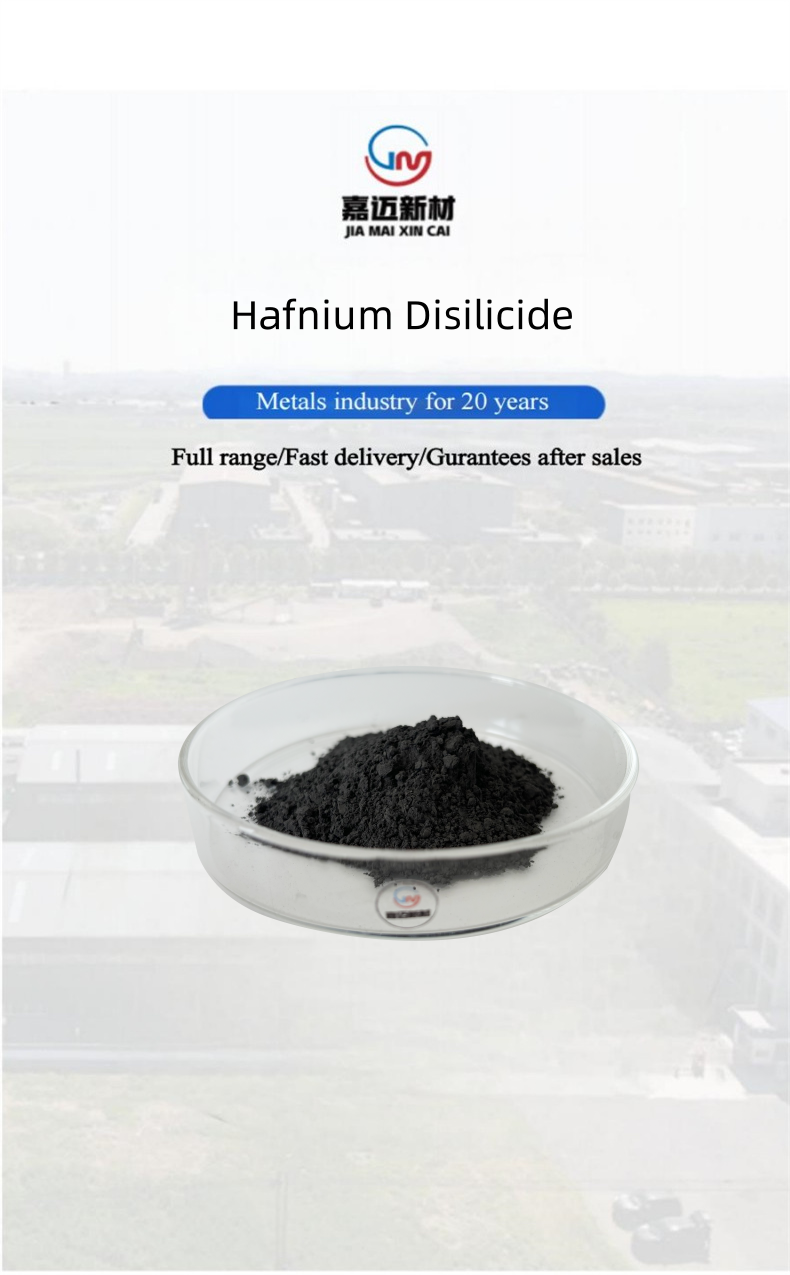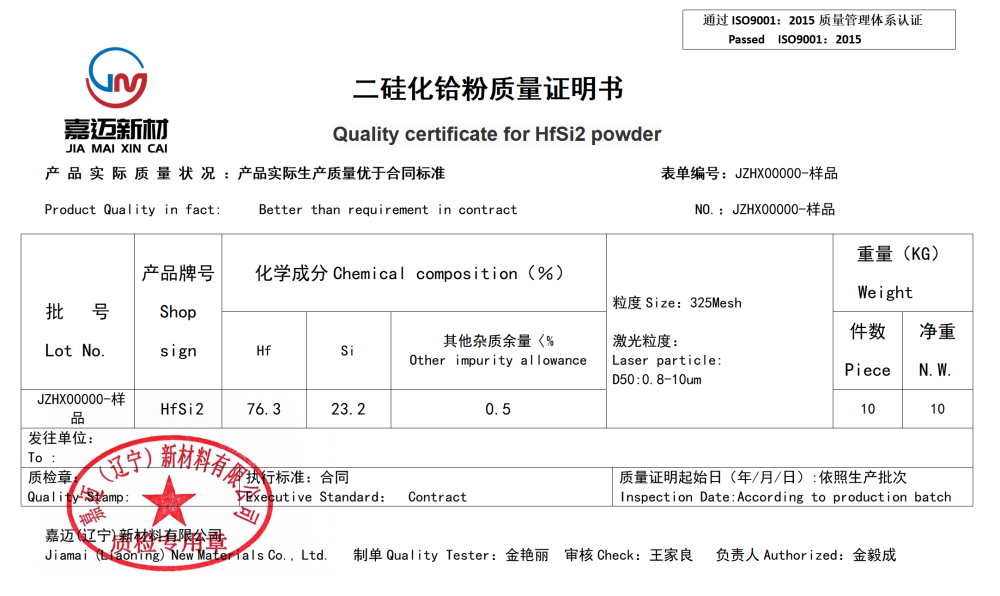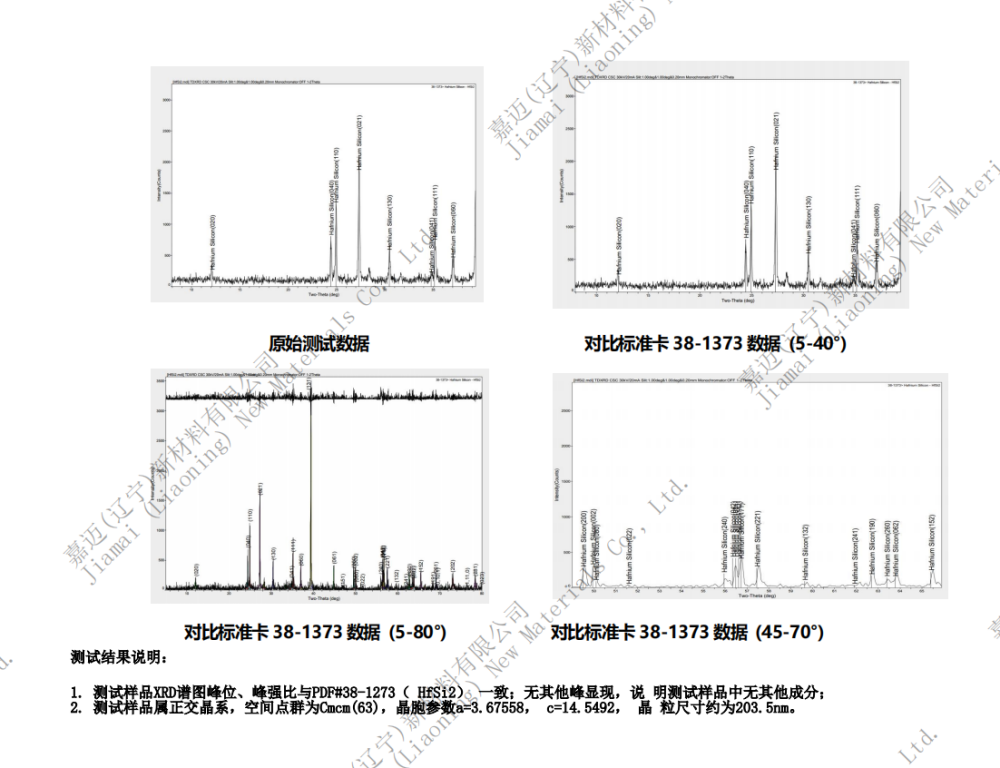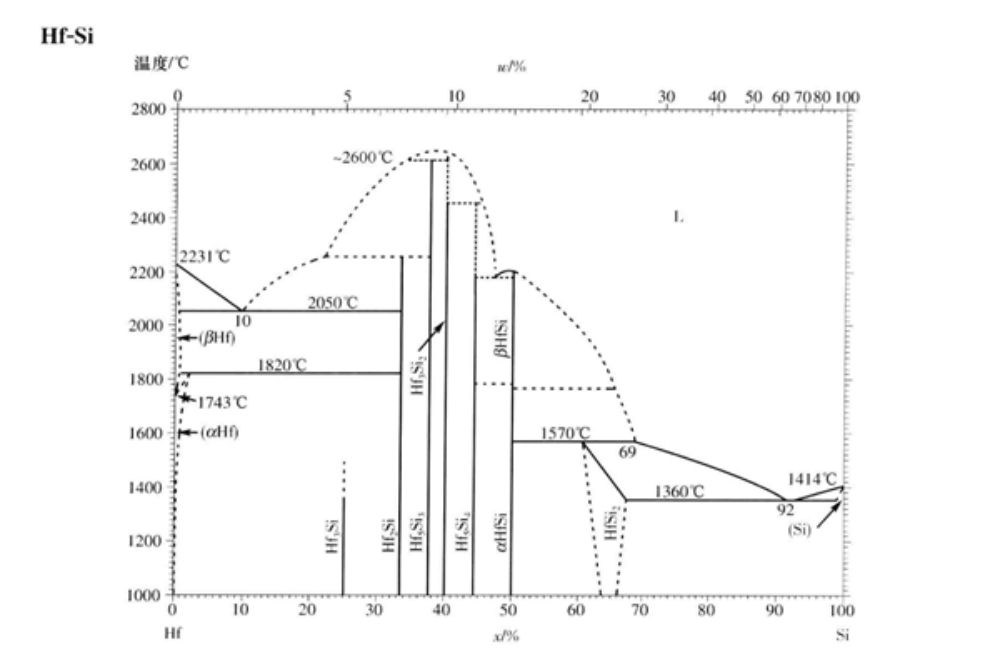
Product Name: Hafnium Disilicide (HfSi2)
Specification: 0.8-10um (D50)
Appearance: Irregular
Color: Black Grey
Features: high purity, small particle size, uniform distribution, large specific surface area, and high surface activity
Application: Metal ceramics, high-temperature anti-oxidation coatings, high-temperature structural materials, and aerospace and other fields







Hafnium silicide
chemical formula: HfSi2
CAS:12401-56-8
EINECS: 235-640-1
Density: 8,02 g/cm3
Melting point: 1680 ° C
Molecular weight 234.66
Application areas:
1. Nuclear industry materials
Applications: Control rods for nuclear reactors, neutron absorbing materials, coatings for nuclear waste containers.
According to: Hafnium has a large neutron absorption cross section (about 105 microns), making it an ideal material for nuclear reactor control rods. Hafnium silicide can improve high-temperature stability and extend service life. Excellent radiation and corrosion resistance, suitable for 2 High temperature structural materials and coatings
Applications: aerospace engine blades, supersonic aircraft thermal protection layer, high-temperature furnace lining.
Basis: Hafnium silicide has a melting point of about 2500 ° C, which is superior to zirconium silicide, and has stronger high-temperature oxidation resistance (especially in oxygen rich or extreme thermal shock environments). As a coating (such as through CVD/PVD technology), it can protect nickel based superalloys from high-temperature oxidation and corrosion.
3. Semiconductors and Microelectronics Devices
Application: High dielectric constant gate material (replacing SiO ₂), integrated circuit diffusion barrier layer.
Basis: HfSi ₂ has good compatibility with silicon substrates, can reduce interface defects, and can be used as a high dielectric constant (high-k) material in advanced processes to improve transistor performance. In copper interconnect technology, as a diffusion barrier layer (similar to TaN), it prevents copper atoms from migrating to the silicon substrate.
4. Wear resistant and corrosion-resistant coatings
Application: Precision tool coating, chemical equipment anti-corrosion coating, marine environment anti-corrosion coating.
basis:
High hardness (about 15-20 GPa) and chemical inertness, resistant to acid, alkali, and salt spray corrosion.
Extend the service life of tools and equipment through thermal spraying or vapor deposition techniques.
5. Thermoelectric materials
Application: High temperature waste heat power generation system, deep space detector isotope battery.
basis:
Hafnium silicide (such as HfSi ₂) has a high thermoelectric figure of merit (ZT) within a certain temperature range, which can directly convert thermal energy into electrical energy.
The high temperature resistance makes it suitable for extreme environments such as spacecraft exhaust heat recovery.
6. Composite material reinforcement phase
Applications: Ceramic matrix composites (CMC), metal matrix composites (MMC).
basis:
As a reinforcing phase added to the matrix of silicon carbide (SiC) or aluminum oxide (Al ₂ O3), the fracture toughness and high-temperature creep resistance of the material can be improved.
Used for spacecraft thermal protection systems (TPS) or hypersonic aircraft leading edge components.
7. Exploration of emerging fields
Quantum materials: Study the potential properties of hafnium silicide in topological insulators or superconducting materials.
New energy: used as a catalyst carrier (such as electrolysis of water to produce hydrogen) or as an interface layer for solid-state batteries.
Optoelectronic devices: exploring their applications in ultraviolet detectors or photovoltaic materials.
Packaging and storage: This product is packaged in an inert gas filled plastic bag, sealed and stored in a dry and cool environment. It should not be exposed to air to prevent moisture from causing oxidation and aggregation, which may affect dispersion performance and usage effectiveness; The packaging quantity can be provided in separate packages according to customer requirements.







